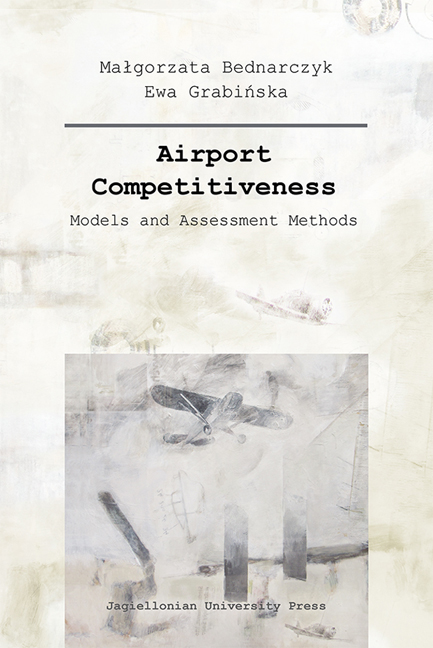Book contents
- Frontmatter
- Contents
- List of Common Abbreviations
- Dedication
- Introduction
- 1 The Essence of Air Transport and its Socio-Economic Role
- 2 Significance of Competitiveness in Air Transportation
- 3 Foundations for Assessing Competitiveness of an Airport
- 4 External and Internal Determinants of Regional Airport Competitiveness
- 5 Competitiveness Model of a Regional Airport
- Conclusions
- List of Tables and Figures, Drawings and Graphs
- Literature
- Appendix
- List of Graphs and Tables in the Appendix
3 - Foundations for Assessing Competitiveness of an Airport
Published online by Cambridge University Press: 10 January 2018
- Frontmatter
- Contents
- List of Common Abbreviations
- Dedication
- Introduction
- 1 The Essence of Air Transport and its Socio-Economic Role
- 2 Significance of Competitiveness in Air Transportation
- 3 Foundations for Assessing Competitiveness of an Airport
- 4 External and Internal Determinants of Regional Airport Competitiveness
- 5 Competitiveness Model of a Regional Airport
- Conclusions
- List of Tables and Figures, Drawings and Graphs
- Literature
- Appendix
- List of Graphs and Tables in the Appendix
Summary
In the ever more competitive world of air transportation, maintaining a competitive position of individual airports in the air transport market is increasing in importance. Ensuring the current and future competitive strength is a serious challenge to all airports, but especially to regional airports, because their position – in comparison with the so-called big ports (hubs) – is not as stable and unthreatened. This chapter discusses the key elements for the analysis and evaluation of airport competitiveness. An overview of methods and tools used in competitiveness evaluation is shown, leading to the selection of features, which have significant impact on a competitive position of an airport.
Fundamental aspects of airport competitiveness
The dynamic development of the market for air transport services, coupled with the processes of liberalization and deregulation, have led to increased competition between individual airports.86 It turns out that the marketing approach, which assumes airport's monopoly on the service, is out-dated. In recent years, airport areas in many regions have been significantly expanded. This has been largely influenced by the emergence of the so-called low-cost airlines. Passengers, who can purchase an airline ticket at a favourable price, are willing to devote more time to getting to the airport, which offers them that opportunity. The development of transport infrastructure also has a major impact on airport competitiveness. Airports have to compete against each other for customers.
The growth in air traffic volume requires airports to increase their infrastructure spending. They need to improve the efficiency of runways, the assignment of slots and ground operations. This is associated with the need to work with new and still very expensive technological solutions. The processes of deregulation and liberalization of the airports, which have been taking place around the world for the last several years, led to airports becoming prone to fierce competition. On the other hand, the quality of airport service is affected by separate regulations (e.g. such concerning safety or protection of the environment). Until a few decades ago, most airports were state owned. The gradual privatization carried out today in many countries is causing an increase in shareholders’ expectations for profit and quality management.
- Type
- Chapter
- Information
- Airport CompetitivnessModels and Assessment Methods, pp. 59 - 86Publisher: Jagiellonian University PressPrint publication year: 2015



